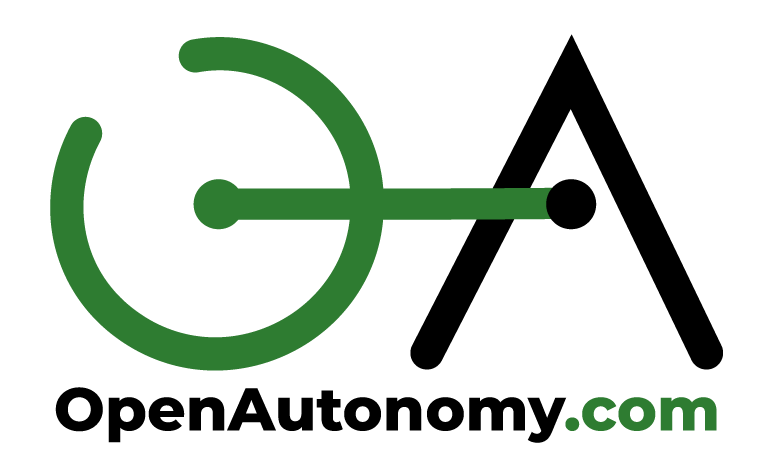When Mining Giants Embrace Open Standards: Analyzing Epiroc's Autonomy Strategy
- vpeng2
- Sep 24
- 3 min read
By the OpenAutonomy.com Editorial Team
In building our coverage of significant Open Autonomy developments, we turn to Epiroc's September 2024 acquisition and rebranding of ASI Mining—a move that signals how major mining technology providers are positioning themselves in the mixed fleet automation market.
The rebranding of ASI Mining's Mobius platform to "LinkOA" (Link Open Autonomy) following Epiroc's acquisition might seem like typical corporate integration. Yet the explicit adoption of "Open Autonomy" in the naming reveals something more significant: a major drilling equipment manufacturer and automation provider publicly committing to interoperability principles in the autonomous haulage space.

The Strategic Calculus
For Epiroc, embracing OEM-agnostic automation technology makes strategic sense. As a drilling equipment manufacturer without a haul truck portfolio, they have no conflicting interests in the haulage autonomy market. They can offer truly neutral automation solutions without cannibalizing their own equipment sales.
With autonomous adoption hovering around 3-4% of ultra-class trucks despite widespread interest, the traditional closed-stack approach has struggled to scale. Mines with mixed fleets—which is most of them—face an impossible choice between massive write-offs or missing automation's benefits entirely.
Epiroc appears to be positioning itself as the integration layer that mining companies need—a technology provider that can bridge the gap between different truck manufacturers' equipment. It's a market opportunity that exists precisely because the major haul truck manufacturers have historically maintained closed systems.
Beyond the Marketing: Real-World Validation
The true test of any "open" system is whether it actually works across different manufacturers' equipment in production environments. Here, LinkOA (formerly Mobius) has already proven its credentials at Hancock Iron Ore (HIO; formerly Roy Hill) in Western Australia.
The HIO deployment demonstrates genuine OEM-agnostic capability, with Epiroc's system successfully automating a mixed fleet of Caterpillar 793F and Hitachi EH-5000 haul trucks. Critically, this system integrates with Wenco's fleet management system while coordinating both manned and autonomous operations—proving that third-party automation platforms can indeed work with independent FMS providers across mixed operational modes, not just OEM systems.
With over 70 trucks planned for conversion, HIO represents the world's largest single autonomous mine using an open architecture approach. The fact that this system bridges equipment from competing manufacturers while interfacing with an independent FMS validates that true interoperability is achievable.
Industry Implications
Epiroc's move validates a growing market for vendor-neutral automation solutions. As a major equipment technology provider without haul truck manufacturing conflicts, they're uniquely positioned to offer what mines actually need: integration across mixed fleets.
This development highlights an emerging ecosystem where specialized technology providers can thrive by solving interoperability challenges that haul truck manufacturers have little incentive to address. It also indicates that the automation market is maturing beyond single-vendor solutions.
For mining companies, Epiroc's strategy offers a viable path to automation that doesn't require fleet standardization. Whether this promise materializes depends on several factors:
Will the platform truly integrate with all major truck manufacturers' equipment?
How will haul truck OEMs respond to third-party automation of their equipment?
What level of functionality and performance can be achieved compared to native OEM automation systems?
The Standards Question
While Epiroc’s branding clearly embraces the language of open autonomy, one key question remains: Will LinkOA align with emerging industry standards like ISO 23725, which defines interfaces between Fleet Management Systems and Autonomous Haulage Systems? Whether their platform aligns with these standards or creates another "standard" remains unclear.
True interoperability requires more than bilateral integrations—it requires adherence to shared protocols. Without this, the industry risks replacing one set of proprietary systems with another.
Looking Ahead
Epiroc's embrace of Open Autonomy represents more than market positioning—HIO's deployment proves these systems work at scale. The successful integration of mixed OEM fleets with third-party fleet management systems demonstrates that the technical barriers to interoperability can be overcome.
The real question now isn't whether open systems are technically feasible—HIO has answered that. Instead, it's whether the broader industry will embrace this model. Will haul truck manufacturers continue to resist third-party automation, or will customer demand for flexibility force a more open approach?
As mining operations increasingly demand the ability to preserve their existing fleet investments while gaining autonomous capabilities, we expect solutions like LinkOA to proliferate. Technology providers unburdened by equipment manufacturing conflicts are uniquely positioned to deliver what mines actually need: the freedom to automate their existing assets regardless of brand.
The era of single-vendor automation lock-in faces its most serious challenge yet—not from industry rhetoric or standards committees, but from working systems proving that a better way exists.
OpenAutonomy.com provides independent analysis of developments in interoperable mining systems. Epiroc is not currently a contributor to our platform.



